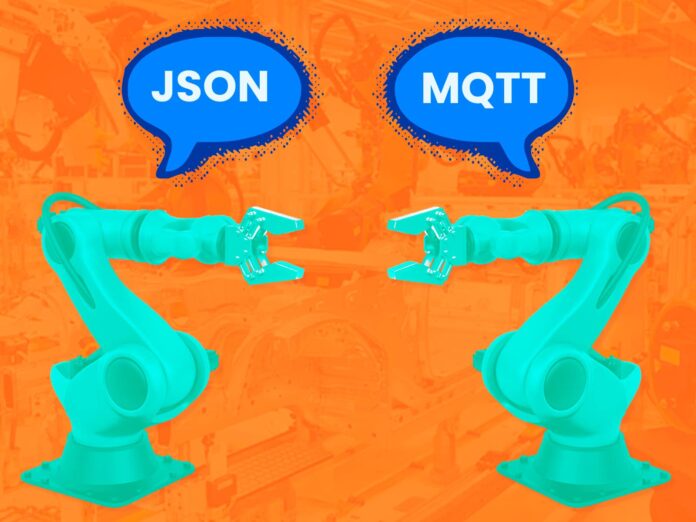
To have a conversation, people must speak the same language. Connected devices aren’t so different. They rely on a common set of rules to govern the passage of data back and forth. Of course, technologists are always innovating. They come up with new, better protocols all the time. They also revamp the old ones. Sometimes a new protocol is the only way to send data in a standard format—essential for integration with machine learning algorithms, which are the key to predictive analytics and other AI technologies that drastically improve production line efficiency. Sometimes one protocol just offers a faster, more reliable way to transfer data than another.
The right protocol for the job delivers tremendous benefits, such as connection to the cloud for AI, machine learning, and analytics, reducing costs of new equipment, and increasing the usability of collected data. If you use manufacturing IoT, you need to know about the two protocols that are delivering on the promise of Industry 4.0. You must also figure out how to use them—preferably without rebuilding your system from the ground up. These two protocols are called MQTT and JSON. Let’s take a look at how they help, why so many companies struggle to implement them, and the simplest way to take your smart manufacturing line into a new and stronger era of industrial IoT.
MQTT and JSON in Manufacturing IoT
Message Queuing Telemetry Transport (MQTT) is not a new protocol. In fact, it’s been around since 1999, when early IoT implementers used it to connect things like oil pipelines and satellites. It has also been updated many times; the latest version, as we publish, was released in 2019.
MQTT manages the messaging between machines with unprecedented ease and flexibility. With little programming, MQTT enables all types of devices and software to communicate in both directions, which makes it ideal for sending instructions, collecting data, and changing the flow of messages on the fly: Key tasks for bringing agility to manufacturing and IIoT. Maybe that’s why it is quickly becoming the standard protocol for smart factories. But to add more flexibility and functionality to an IoT system—including connecting to the power of machine learning, which lives on the cloud—MQTT alone isn’t enough. You also need an inter-process communication (IPC) protocol that enables all your devices and software to “speak the same language” as the cloud makes it easy for people to read, change, and troubleshoot messages on the factory floor. That is where JSON comes into play.
JavaScript Object Notation (JSON) offers a data payload format that works with all kinds of software. That vastly expands the range of real-life behaviors you can build into your manufacturing lines—especially with machine learning. If you can get your IoT system to integrate with this self-improving form of AI, then you get into big data analytics, predictive maintenance, automated quality control, and more. It’s not an exaggeration to say that these capabilities are essential for manufacturers to stay competitive. By expanding the scope of things industrial IoT can do, MQTT and JSON boost business agility, reduce integration costs, bring together information technology (IT) and operational technology (OT) systems, connecting the manufacturing line to the cloud. So why isn’t everyone using them already?
The Struggle to Adopt New Protocols
Manufacturing IoT was built on protocols that we now consider “legacy,” meaning they are probably not the best solution for today’s broader technology ecosystem. Many industrial IoT systems run on a hodge-podge of Modbus, Profibus, OPC-UA, BACNet, and more. These legacy protocols are complicated, expensive, and anything but lightweight—especially compared to MQTT and JSON.
But they also work. Few manufacturers are ready to shut down production while they revamp their systems. Fewer still can afford to pay developers to write custom code that allows legacy systems to talk to each other. With the right tool, however, you don’t need to rebuild your IoT system from scratch. You can get the advantages of MQTT and JSON—low-code solutions that your in-house OT engineer can quickly implement—to work with whatever you already have. The solution is called an Integration Hub.
Integrating IoT Protocols Into Legacy Systems
In the context of manufacturing IoT, an Integration Hub is a software platform that bridges the gap between legacy protocols and MQTT. It takes binary data from your old system, converts it into JSON, and sends it to an MQTT broker. An Integration Hub also sends data back to the device. That creates bidirectional communication that supports device control based on data received from the devices. In other words, an industrial IoT Integration Hub is the key to sending data to the cloud or on-premise solutions—and getting powerful results in return. It is a Rosetta Stone for industrial IoT protocols. And it’s the simplest, lowest-cost way to pull ahead in manufacturing’s frantic race toward the future.
- Coinsmart. Europe’s Best Bitcoin and Crypto Exchange.Click Here
- Platoblockchain. Web3 Metaverse Intelligence. Knowledge Amplified. Access Here.
- Source: https://www.iotforall.com/industrial-iot-needs-mqtt-and-json-heres-how-to-make-the-switch



